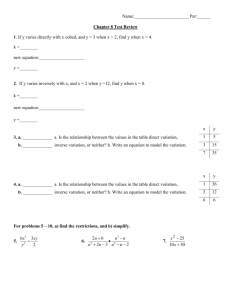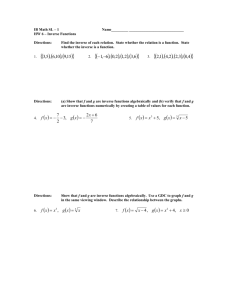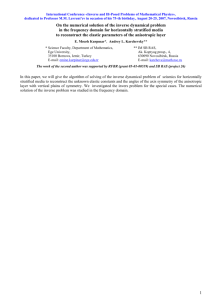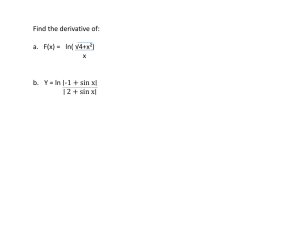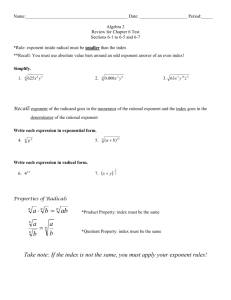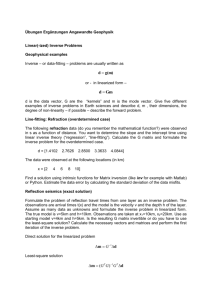Introduction to inverse functions
advertisement
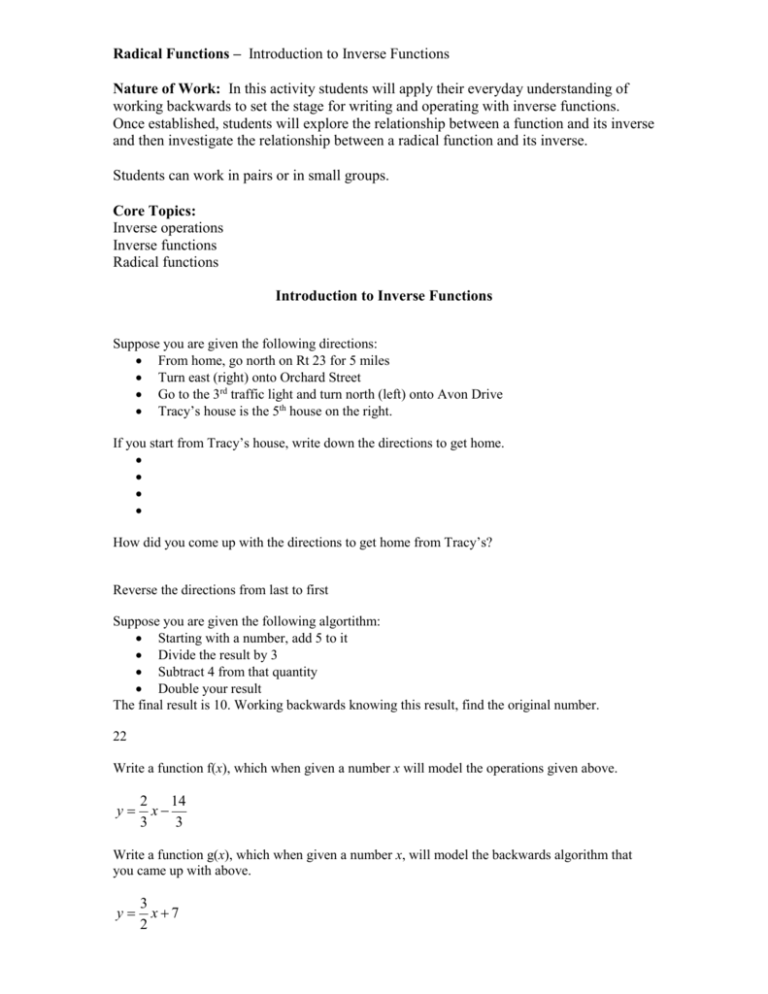
Radical Functions – Introduction to Inverse Functions Nature of Work: In this activity students will apply their everyday understanding of working backwards to set the stage for writing and operating with inverse functions. Once established, students will explore the relationship between a function and its inverse and then investigate the relationship between a radical function and its inverse. Students can work in pairs or in small groups. Core Topics: Inverse operations Inverse functions Radical functions Introduction to Inverse Functions Suppose you are given the following directions: From home, go north on Rt 23 for 5 miles Turn east (right) onto Orchard Street Go to the 3rd traffic light and turn north (left) onto Avon Drive Tracy’s house is the 5th house on the right. If you start from Tracy’s house, write down the directions to get home. How did you come up with the directions to get home from Tracy’s? Reverse the directions from last to first Suppose you are given the following algortithm: Starting with a number, add 5 to it Divide the result by 3 Subtract 4 from that quantity Double your result The final result is 10. Working backwards knowing this result, find the original number. 22 Write a function f(x), which when given a number x will model the operations given above. y 2 14 x 3 3 Write a function g(x), which when given a number x, will model the backwards algorithm that you came up with above. y 3 x7 2 Fill out the following table: x y=f(x) z=g(y) f(z) 22 10 22 10 1 -4 1 -4 7 0 7 0 -20 -18 -20 -18 What patterns have you noticed in the columns (outputs)? z g y x y f z f x The plots of f ( x) and g ( x) are shown below. Notice the symmetry of the two functions when plotted together. What radical function f 1 y would undo the actions of the function y f x x3 2 as shown in the table and plot below: x y f x f 1 y -1 1 -1 0 2 0 1 3 1 2 10 2 Solution: f 1 y 3 y 2 Using the table: f 1 f x __________ For the following radical functions y f x find the inverse function f 1 y if an inverse function exists. 1.) f x 4 x 4 2.) f x 3 8 x 8 Note that: 3 DNE x3 1 8 x3 x3 8 3 3 3 3 3 3 8 1 8 3 8 8 x 88 x 88 x x 8 8 3.) f x 5 x 1 x5 1




